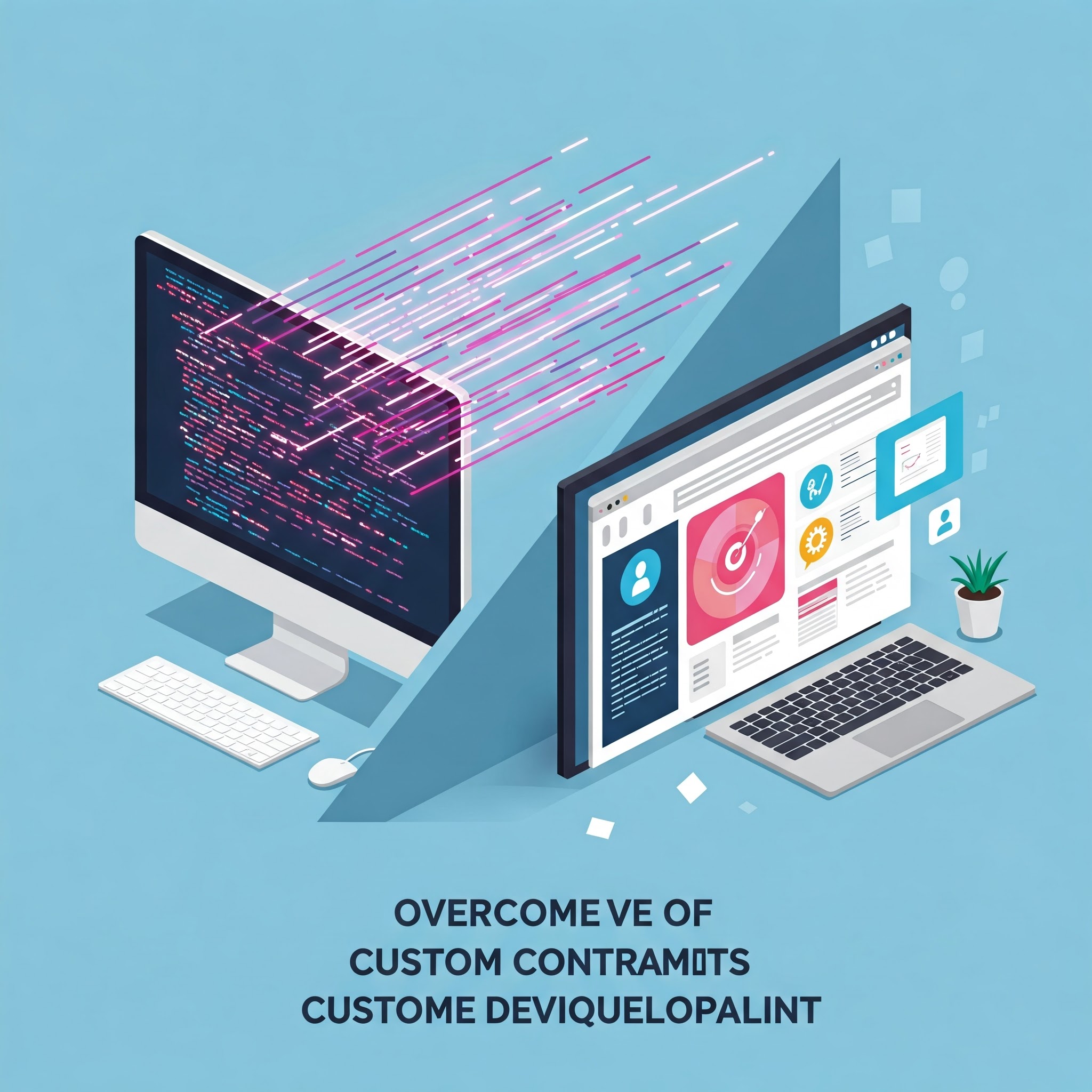How to Overcome Budget Constraints in Custom Software Development Without Sacrificing Quality

How to Overcome Budget Constraints in Custom Software Development Without Sacrificing Quality
Building custom software for your business can feel like a dream come true—until the budget starts spiraling out of control. Many business owners set out with grand ideas, only to find themselves stuck between cutting costs and maintaining quality. It’s a tough spot to be in. Reduce the budget too much, and you end up with a poorly built, ineffective product. Underpay developers, and you risk burnout, delays, or low-quality work.
So, how do you strike a balance? How can you build great custom software without breaking the bank or compromising fairness? Let’s break it down.
1. Start with Clear Requirements: Define an MVP First
One of the biggest reasons software projects go over budget is scope creep—adding unnecessary features along the way. Many business owners start with a simple idea but get carried away, resulting in expensive, time-consuming software that may never even launch.
Solution: Focus on building a Minimum Viable Product (MVP)—a version with only the essential features. This approach helps:
- Reduce initial development costs.
- Get to market faster.
- Test the idea before investing heavily in additional features.
Ask yourself: What is the core function of this software? What problem does it solve? Build that first, and you can always add enhancements later.
For more insights on custom software development for startups, check out Husnic.com blog.
2. Leverage Open-Source and Low-Code Solutions
Many businesses assume custom software must be built from scratch, but that’s not always the case. There are powerful open-source tools and low-code platforms that can accelerate development without compromising quality.
Solution:
- Use open-source frameworks like Nextjs (for React and server), Laravel (for PHP), Django (for Python), or Ruby on Rails to avoid reinventing the wheel.
- Platforms like Bubble, OutSystems, and Retool allow you to develop high-quality applications at a fraction of the cost.
- No-code tools can handle non-core functionalities, leaving developers to focus on critical features.
This approach reduces development time while still giving you a high level of customization. Read more on our guide to cost-effective software development.
3. Hybrid Team: Combine In-House & Outsourcing
Hiring an entire development team in-house can be extremely costly, especially for small businesses or startups. But outsourcing everything to the cheapest bidder can backfire.
Solution:
- Keep core team members in-house (e.g., a lead developer and project manager) for strategy and quality control.
- Outsource specialized tasks (e.g., UI/UX design, database management) to reliable freelancers or agencies.
- Consider working with nearshore or offshore developers from cost-effective regions without compromising expertise.
This strategy balances cost, control, and expertise, ensuring a quality product without unnecessary expenses.
Explore more about custom software outsourcing best practices in our blog post.
4. Use Agile Development for Cost Control
Traditional development models often lead to wasted effort and unnecessary spending. Instead of building everything at once and hoping it works, Agile prioritizes continuous improvements.
Solution:
- Develop software in small, manageable phases.
- Regularly test and adjust based on real-world feedback.
- Stop wasting money on features users don’t need.
This iterative process ensures that every dollar spent goes toward building something valuable.
5. Optimize Hosting & Infrastructure Costs
Many companies unknowingly overspend on cloud services without realizing they could cut costs significantly.
Solution:
- Choose scalable cloud services with a pay-as-you-go model (Netlify, Vercel,AWS, Google Cloud, or Azure).
- Use containerization (Docker, Kubernetes) to improve efficiency and reduce infrastructure waste.
- Regularly review cloud spending to eliminate unused resources.
Smart cloud management prevents unnecessary expenses and ensures long-term sustainability.
6. Leverage APIs & Pre-Built Components
Building everything from scratch eats up time and money. Instead, why not use reliable third-party tools?
Solution:
- Use Paystack, Flutterwave, Stripe or PayPal for payments instead of custom solutions.
- Use Firebase or Auth0 for authentication instead of building user management from the ground up.
- Use AI-powered APIs (e.g., OpenAI, Gemini) for advanced features without investing heavily in R&D.
APIs speed up development and reduce the cost of maintenance over time.
7. Explore Grants, Startup Credits & Tech Partnerships
Many businesses overlook funding opportunities that could ease their software development costs.
Solution:
- Apply for government grants for tech innovation.
- Use AWS Activate, Google Cloud for Startups, or Microsoft’s startup credits for free cloud resources.
- Look for incubators or accelerators that offer funding and mentorship.
These options reduce financial strain while still allowing you to build high-quality software.
8. Plan for Long-Term Scalability from Day One
One common mistake? Businesses build software that works for now but becomes too expensive to scale later.
Solution:
- Use modular architecture—break the system into independent components that can be upgraded individually.
- Plan a long-term maintenance budget so you’re not caught off guard by future costs.
- Choose cloud-native and scalable databases (e.g., Firebase, PostgreSQL) to handle future growth without massive rework.
Investing in scalability now saves huge costs in the future.
Final Thoughts: Smart Spending, Not Just Cost Cutting
Budget constraints don’t have to mean low-quality software or underpaid developers. The key is smart spending—prioritizing the right features, using available resources wisely, and maintaining a sustainable development process.
If you take a strategic approach instead of simply cutting costs, you can build software that’s affordable, high-quality, and scalable for the future.
So, before you panic over budget constraints, ask yourself: Am I managing costs strategically, or just cutting corners? The right answer will make all the difference.
For more expert advice, book a free 30 mins consultation with Husnic.com and explore our latest insights on custom business software development.
